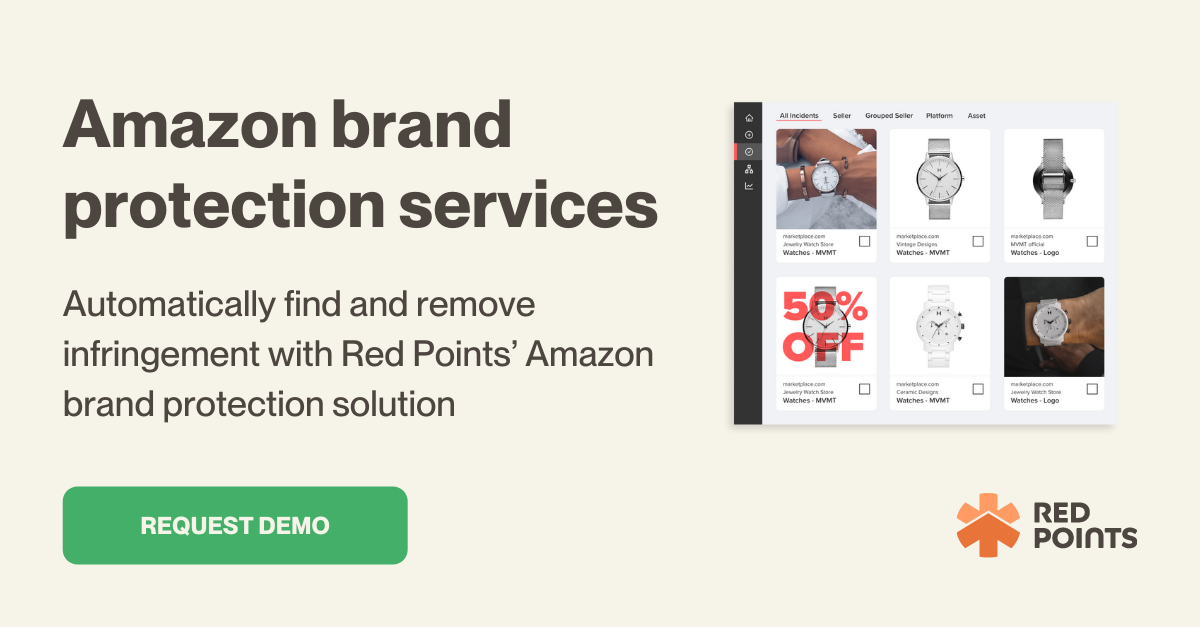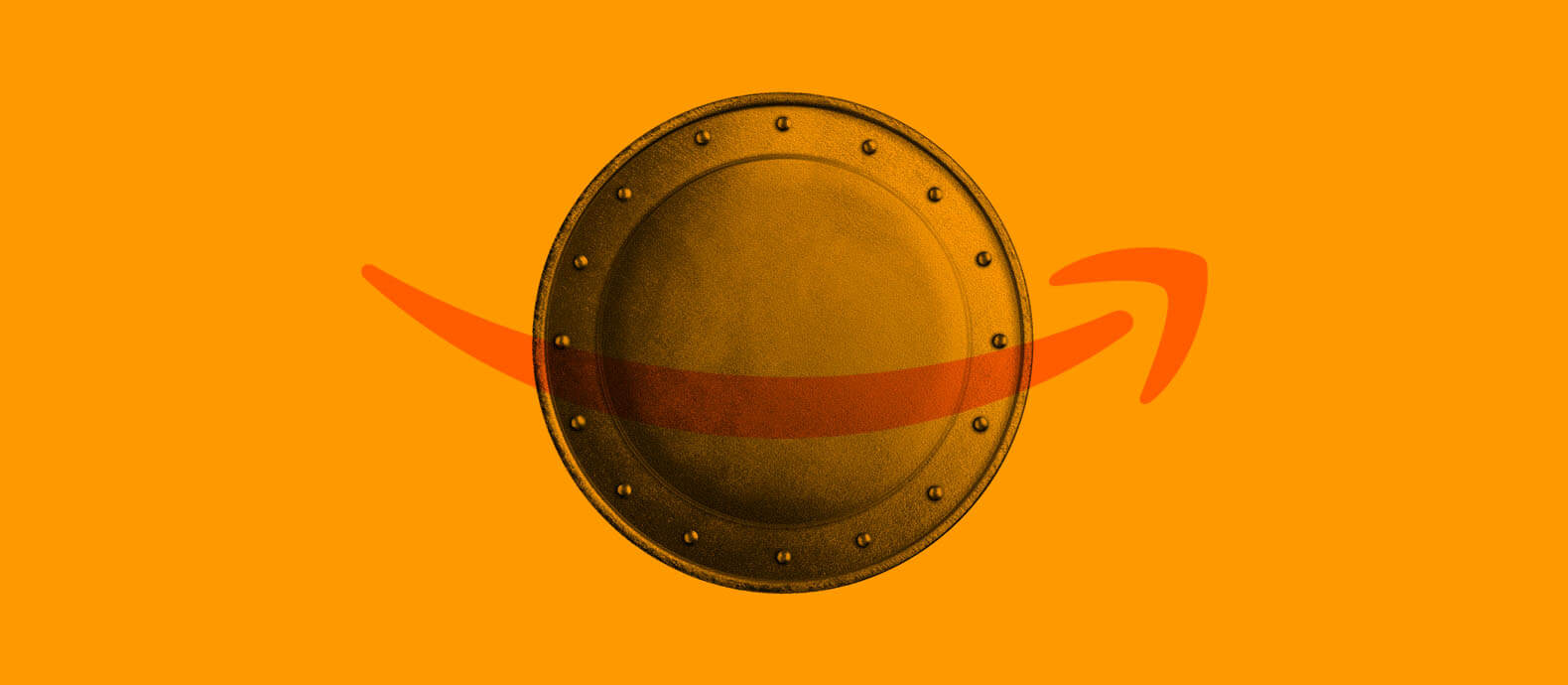According to Amazon, there were around 800,000 attempts by bad actors to create seller accounts in 2022. In the same year, Amazon also took more than 6 million counterfeit product units out of the global supply chain. While this is an indication of Amazon’s robust approach to protecting its website and users, it also shows how prevalent the issue of counterfeiting is across marketplaces.
The rise of counterfeiting on ecommerce platforms is concerning for many brands. As a business owner or corporate decision-maker, you must be informed and proactive if you want to protect your brand from counterfeiters on Amazon. You also need to implement some protection strategies to ensure that you can safeguard your business.
In this blog, we’ll be focussing 3 effective Amazon counterfeit protection strategies by highlighting a few key topics, including:
- Scope of the problem: the rising tide of Amazon counterfeits
- What’s the cost of inaction for brands?
- 3 effective Amazon counterfeit protection strategies
- Best practices for Amazon counterfeit protection
Scope of the problem: the rising tide of Amazon counterfeits
Amazon is a massive marketplace that hosts millions of customers and deals with billions of transactions. In 2022, Amazon invested $1.2 billion in brand protection on its site. Over 15,000 of their employees actively work on brand protection to ensure that businesses feel safe using their websites. Nevertheless, counterfeiting caused by third-party sellers is still a major issue across Amazon that businesses will have to contend with.
Counterfeiting has the potential to damage your brand reputation if left unchecked. Scammers that undercut your revenue and pass off their inferior products using your IP have to be stopped if you want to maintain a strong level of customer trust. The more you let counterfeiting impact your brand, the easier it will be for your brand’s image to become tarnished in the market.
Factors contributing to the rise of counterfeiters targeting Amazon
- Globalized supply chains
The rise of globalized supply chains has made it easier for counterfeiters to produce and distribute fake goods. In the past, bad actors were often limited to producing counterfeits in their own countries. Now, they can source components from all over the world and assemble them in countries with lax counterfeiting laws.
For example, a counterfeiter might source the packaging from China, the ingredients from India, and the manufacturing from Mexico. This makes it very difficult for law enforcement to track down and prosecute counterfeiters.
- Challenges identifying and removing counterfeit listings
As bad actors have become more deceptive and more tech-based it has become increasingly hard to identify and remove their counterfeit listings. This has resulted in more counterfeiters slipping through the cracks which in turn has contributed to the rise of counterfeiters across ecommerce platforms.
- The growing market for counterfeit goods
There is a high demand for brand-name products at low prices. This creates an incentive for counterfeiters to produce fake goods that look and feel like the real thing but are sold at a fraction of the price.
This demand is driven by a number of factors, including the increasing affluence of consumers in developing countries, the growing popularity of online shopping, and the increasing availability of counterfeit goods.
- The difficulty of enforcing intellectual property laws in some countries
Enforcing intellectual property laws in some countries poses significant challenges. Factors like lack of awareness, weak legal frameworks, limited resources, corruption, cultural attitudes, socioeconomic conditions, and inadequate international cooperation contribute to the complexity. These include insufficient understanding, outdated laws, resource constraints, corruption, societal beliefs, economic factors, and cross-border complexities, all impeding effective enforcement efforts.

What’s the cost of inaction for brands?
- Damage to brand reputation
If you don’t act to prevent counterfeits from impacting your brand you will risk damage to your brand’s reputation. Counterfeit products that misuse your IP will trick consumers into thinking they are interacting with your brand.
These counterfeit products will be inferior which will likely result in negative reviews and customer dissatisfaction directed at your brand. If you allow this to continue you will lose the loyalty and trust of customers. Many will feel that you are not doing enough to protect them from counterfeiters and they will start shopping elsewhere.
- Lost revenue and market share
Unfettered counterfeiting activity will also impact your revenue and your market share. Amazon is a major marketplace that represents a significant opportunity for brands to sell their products and services online.
If you allow counterfeiting to persist on this platform you will end up competing with cheaper counterfeit alternatives. A certain section of consumers will opt for these cheaper alternatives and you will lose out on revenue. Other customers will become confused and dissatisfied – this will also result in a decline in sales and a loss of market opportunities.
3 effective Amazon counterfeit protection strategies
1. Strengthening your Intellectual Property rights
The first strategy you should consider involves registering your intellectual property rights (IP) and enforcing them on Amazon. By registering your trademarks at the U.S. Patent and Trademark Office you will provide yourself with a strong legal grounding to defend your IP.
Then you should become familiar with Amazon’s Brand Registry. This service is designed to help businesses protect and build their brand on Amazon. They can help you register your IP and give you the resources you need to protect your brand’s content on Amazon. You can then use their protection tools and data-powered programs to prevent and remove infringements.
2. Effective enforcement and takedown procedure
Another effective counterfeit protection strategy is to report counterfeit listings directly to Amazon. Their anti-counterfeiting policy states that “Products offered for sale on Amazon must be authentic. The sale of counterfeit products is strictly prohibited.”
If you notice listings that violate this policy then one of your first actions should be to contact Amazon. If you are enrolled in Amazon’s Brand Registry, you can use the ‘Report a Violation tool’ to search for and report items that you believe may be counterfeit. This will kickstart Amazon’s enforcement and takedown procedure.
3. Proactive monitoring and detection
As a final measure, you should also proactively monitor product listings and customer reviews to ensure that you can detect counterfeit products on Amazon when they emerge.
To make sure that your monitoring is efficient you can also use AI-powered tools. AI detection solutions will be able to scour Amazon 24/7 in search of counterfeit listings. These will enhance your detection capabilities and allow you to use your resources more effectively.
Best practices for Amazon counterfeit protection
- Maintaining a strong brand presence
A strong brand presence will help you stand out to customers on Amazon and will make it harder for counterfeiters to take advantage of your brand. Ensure that you are optimizing product listings on Amazon with accurate information, insightful copy, and high-quality images.
This will make it easier for consumers to determine whether or not they are interacting with a real brand rather than a counterfeiter. You should encourage these customers to leave feedback and reviews. This will help to maintain a positive brand presence and make it easier for new customers to trust your products.
- Automate the enforcement of counterfeits on Amazon
You can automate the enforcement of counterfeits on Amazon with Red Points’ Amazon Brand Protection Services. Our solution uses automation, image recognition, and machine learning to execute targeted and effective searches for counterfeits across Amazon’s website.
Once we find potentially infringing sellers you can set up automation rules that will let us instantly start the enforcement process and get the counterfeits removed from the marketplace. You can prioritize certain infringements and act against multiple infringers at the same time. You can then use our performance dashboards to review your coverage and inform your decision-making going forward.
What’s next
The rising tide of counterfeiters targeting Amazon presents major problems for brands operating online. As scammers become bolder and more deceptive, you will have to ensure that you act fast and effectively if you want to protect your business. By paying attention to the various Amazon counterfeit protection strategies we’ve listed above you will give your business the best chance of thriving online.
To protect your brand and your business, it’s important to implement a smart, automated solution for counterfeit detection and removal. This will help you to identify and remove counterfeit products quickly and effectively, minimizing the damage to your brand.
There are a number of different solutions available, so you can choose one that’s right for your business and your budget.
Ultimately, Red Points can put you in a position to defend yourself with robust technology. This will allow you to safeguard your business and customers. To learn more about how Red Points can help you combat counterfeits on Amazon, request a demo here.







